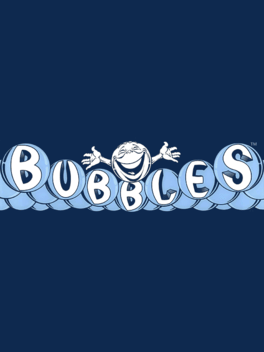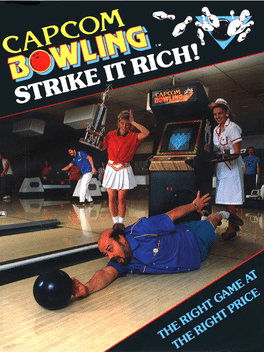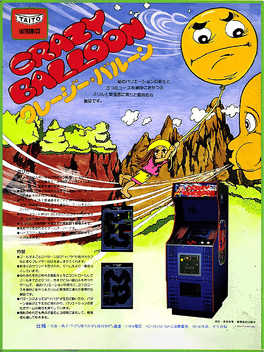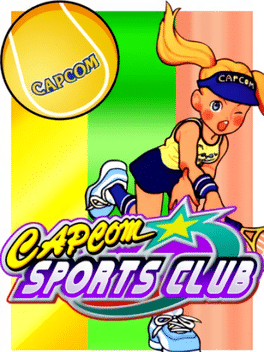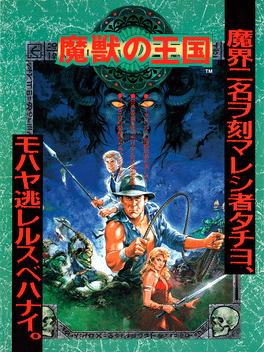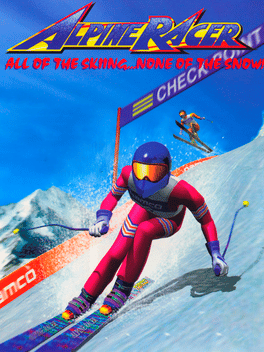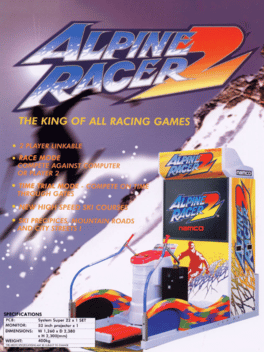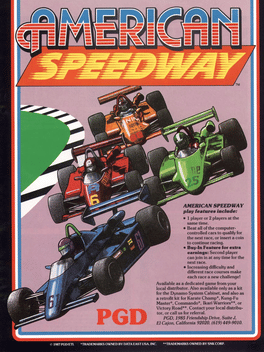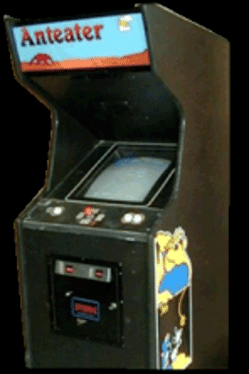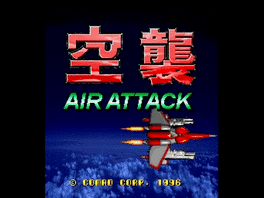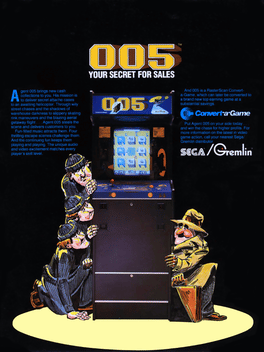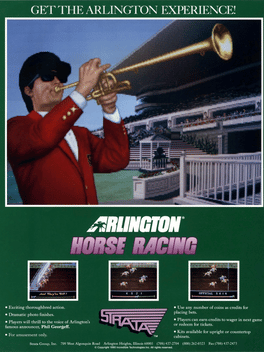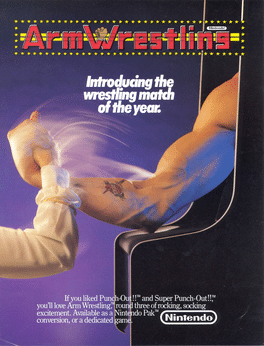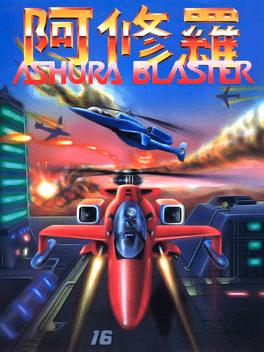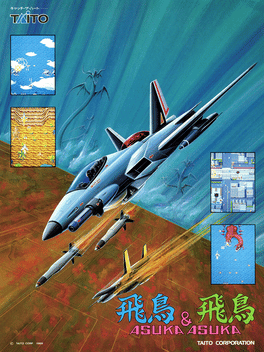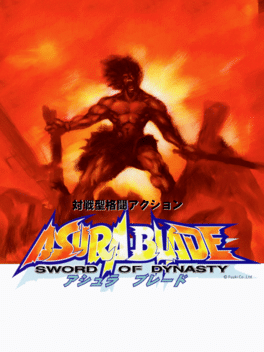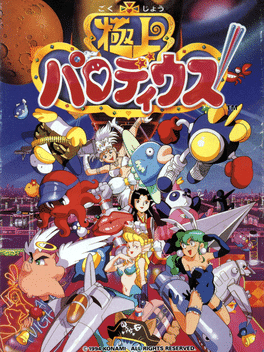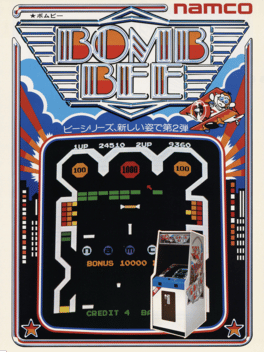Most Popular Arcade Games - Page 141
-
Bubbles
1982
Bubbles
1982
Bubbles is an action game with puzzle elements where the player controls the protagonist, a soap bubble, from a top-down perspective. The object is to clean a kitchen sink by maneuvering the bubble over ants, crumbs, and grease to absorb them. The bubble will grow larger the more objects it absorbs. The player is impeded by enemies—brushes, razor blades, roaches, and sponges—that are deadly to the character. Except for razors, enemies also compete with the player to absorb objects in the sink. Once the bubble reaches a certain size, it will acquire a smiling face and become invulnerable against brushes and sponges; contact with those will reduce the bubble's size to the point it becomes vulnerable again. After all the objects are gone, the player will progress to the next level if the bubble is large enough. If the bubble is not large enough at that point, or if the player enters the drain while the bubble's too small, a life is lost. Once the bubble becomes large enough, the drain in the center of the sink wil -
Capcom Bowling
1988
Capcom Bowling
1988
Capcom Bowling is a top down bowling simulation released to arcades in 1988 by Capcom. Up to 4 four players could play a single game playing alternately. The controls feature a trackball which is used to control both direction and power, and two buttons which control left and right spin or hook. The game was released in both upright cabinet and latterly as a cocktail version. Most of the upright cabinet are conversion kits for existing cabinets although a limited number of dedicated cabinets were produced. These cabinets featured a birch plywood finish to mimic a bowling lane, a larger marbled trackball and painted side art. An alternate version, Coors Light Bowling, was released the following year. -
Crazy Balloon
1980
Crazy Balloon
1980
The player controls a box tied to a floating balloon, which swings left and right continually, within a maze filled with spikes. Any contact with the spikes, either with the balloon or the box, destroys the balloon. Using a four-way joystick, the player moves the box through the maze and toward the goal, ensuring that the swinging balloon avoids the spikes. The player collects points as the box moves closer to the goal (backtracking earns no points). Certain areas of the maze are colored green and purple, and the player will earn more points if the balloon and box pass through the area safely. While there is no time limit, the player cannot wait for a long time; otherwise, a face will appear and blow the balloon into the spikes. As the player completes mazes, individual spikes, or even the entire maze, may begin moving or scrolling. -
Capcom Sports Club
1997
Capcom Sports Club
1997
Capcom Sports Club is a multi-sport arcade game that includes tennis, soccer, and basketball. Each of the games can be played either solo or against a second player. Smash Stars - A knockout tennis tournament where the player takes control of a tennis player from one of sixteen countries. Each of the players have different strengths/weaknesses in eight different categories. A match only lasts for one set and the set begins at 4-4 and if necessary a tie-break has to be played. Kick Stars - A knockout soccer tournament in which the player can choose between eight different countries. Each team has five players (a keeper and four field players) and a team type. These types/specialties are counter attackers, defense, balanced and offensive. A match is played over a span of two minutes (three in a two player match) and when the tournament is won a bonus match can be played against the Star team. Dunk Stars - A knockout basketball tournament in which the player again has the choice of one of eight different coun -
Dark Adventure
1987
Dark Adventure
1987
Dark Adventure is a dimetric action-adventure game produced by Konami that was released for the arcades in North America in 1987.[3] It was the first arcade game by Konami that allowed up to three players simultaneously. The game was also released as Majū no Ōkoku in Japan and as Devil World in other countries outside North America, although these versions feature significant gameplay differences and only allow up to two players. -
Dimahoo
2000
Dimahoo
2000
In this impressive blend of an overhead shoot'em up with RPG characteristics, you must help a group of mystic bounty hunters save the earth against the evil Gobligan Underground Empire. Features excellent 2-D graphics and sound, awesome character & enemy artwork designs, a level-up and elemental-based weapon system and LOTS of hidden items! -
Alpine Racer
1994
Alpine Racer
1994
Alpine Racer is a 3D Alpine skiing arcade game released by Namco in 1995. It features downhill and gate with three courses and two play modes - Race and Time Attack. The player stands on a set of ski-like foot stands while holding onto two bars for stability to play. -
Alpine Racer 2
1996
Alpine Racer 2
1996
A checkpoint-style racing game, featuring realistic physics, unique controls and an unusual genre for a racing game. It features three separate courses and your choice of speed or gate racing. There is a cool replay feature for finishing in first place. -
American Speedway
1987
American Speedway
1987
American Speedway is a top-view racing arcade game released by Enerdyne Technologies in 1987. It features small cars that race around tracks with bends, with time-limits and power-ups. -
Anteater
1982
Anteater
1982
The player controls an anteater that elongates his proboscis through maze-like anthills eating ants. The player can only eat ants with the tip of the anteater's proboscis. If an ant bites your proboscis at any other location you lose a life. Pressing the second button will quickly retract the anteater's proboscis. Worms will not harm you unless eaten head first, in which case you lose a life. Worms can be safely eaten from behind. Eating queen ants at the very bottom of the nest will temporarily clear all ants and worms from the screen. Once the sun has travelled across the screen and night falls, a spider will appear. The spider climbs down the anteater's proboscis, taking a life if it touches the tip. The object is to eat all of the larvae before time runs out, clearing the screen. Each larva is worth 10 points. Each ant is worth 100 points, while eating a worm is worth 200 and multiplies the score you receive from eating ants by 1x (Ex. eating 5 ants +2 worms = 500 x 2 = 1000). Queen ants are worth 1,000. -
Air Attack
1996
Air Attack
1996
The player ships fly through a total of seven stages fighting many enemies and multiple end-level bosses. Each player ship had a semi-automatic Normal shot and Bomb Stock, appearing as a large Phoenix. Players has a total of four different weapon pick-up items to choose from. Weapon 1 is the standard Vulcan weapon, Weapon 2 is a Rapid-Fire shot, Weapon 3 is an area-effect weapon that fires in five directions, two behind the ship and Weapon 4 is a Rocket weapon. Collecting four of the same weapon pick-up allows the selected weapon to flare-out. The player ship only had one hit though and there were no Extend Bonuses. -
005
1981
005
1981
005 is a 1981 arcade game by Sega, in which the player's mission is to take a briefcase of secret documents to a waiting helicopter. It is one of the first examples of a stealth game. The player controls a spy who must avoid the enemies as he makes his way through buildings and warehouses, where he will have to dodge the enemies' flashlights and use boxes as hiding spots. -
Alligator Hunt
1994
Alligator Hunt
1994
Alligator Hunt is a shoot 'em up arcade game released by Spanish company Gaelco in 1994. Reptilian-looking aliens are invading earth and is up to the bravest soldiers (skateboarding kids!) to stop the invasion and destroy the enemy base. Features gameplay similar to Cabal and Blood Bros. -
Arlington Horse Racing
1991
Arlington Horse Racing is a horse racing arcade game released by Strata / Incredible Technologies in 1990, based on the Arlington Park race track. -
Arm Wrestling
1985
Arm Wrestling
1985
The player faces off against a beefy Texan, a Sumo, a masked fighter, a robot, and a mutant in a series of arm-wrestling contests. Timing and quick joystick motions are key to victory. -
Ashura Blaster
1990
-
Asuka & Asuka
1989
Asuka & Asuka
1989
A mysterious invasion force known as the Galaxy Highters invades the Earth in the year 1996. With their abilities in space time manipulation, they are able to invade several time lines in Earth’s history and occupy each one simultaneously. In order to stop the Galaxy Highters, Earth’s militaries design the 'Flying Bird', a jet fighter capable of time travel, enabling it to fly into occupied time lines. -
Asura Blade: Sword of Dynasty
1998
Asura Blade: Sword of Dynasty is Fuuki's first of two attempts at making a one-on-one 2D fighting game; its sequel, Asura Buster, is the second. The story revolves around the search for the eponymous Sword of Dynasty in a war-torn world. The game features eight playable characters, as well as two boss characters, only briefly usable in single-player mode using codes. It uses a simple three-button control scheme and sticks to more basic motion inputs for its roster's special moves, for greater accessibility. Its colorful visuals and detailed background art take inspiration from contemporary entries in the Darkstalkers and Street Fighter Alpha series. -
Fantastic Journey
1994
Fantastic Journey
1994
Overall, the gameplay is identical to that of its predecessor, Parodius! From Myth to Laughter, with several new characters to choose from. Also new, if you play a two-player game, the second player will have a different set of characters to select. They are clones of the first player characters, except with different names and slightly altered sprites or changed color palettes. These characters include: Vic Viper/Lord British, Pentaro/Hanako, Twinbee/Winbee, Takosuke/Belial, Hikaru/Akane, Mambo/Samba, Michael/Gabriel and Koitsu/Aitsu. -
Bomb Bee
1979
Bomb Bee
1979
It is the sequel to Gee Bee, which was released in the previous year. The objective of the game is to use two paddles to bounce a ball which flies around and hit the colored bricks above it with the ball. When the bricks are cleared out of the side sections, it will turn that same side's pop-bumper into 100 points instead of 10.
